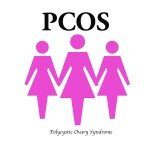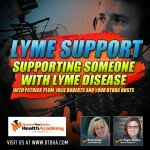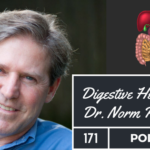 Foreign hormones in our environment, otherwise called xenoestrogens.
Foreign hormones in our environment, otherwise called xenoestrogens.
These hormones are man-made chemicals that mimic human biological hormones and interfere with normal hormone function. The most frequent types of xenohormones are synthetic, hormonally active chemicals that have estrogenic effects on the body and are called xenoestrogens. The increase in the amount and types of these environmental hormones that we are being exposed to can create an estrogen dominance situation in individuals while causing numerous side effects, especially reproductive concerns.
There is clearly more estrogen in our environment today, and we have started to see the dangerous impact of this saturation of estrogen. Because there is increased estrogen in our water, fish and alligators have been reported as having sex disruptions, including being born with both female and male reproductive parts. The prevalence of these foreign estrogens is evident by the fact that xenoestrogens have been found in every single animal present today. Xenoestrogens have also been found in umbilical cord blood, meaning that fetuses are being exposed to foreign estrogens before they are even born.
The reason for the increase in xenoestrogens is that estrogens are used commercially in certain products. Xenoestrogens have only been used commercially for a short period, a little more than fifty years, but during that period, they have been used universally by numerous industries including agricultural and chemical compounds. Because of this fact, they have become ubiquitous in our environment. They are in the food we eat and the water we drink. The xenoestrogens are the hormones that are used by farmers to bulk up the animals that are sold for meat at the grocery store. They are also in our drinking water because they cannot be filtered out.
The effects of these foreign estrogens are still controversial and certain sources question their impact, but our environment has become much more saturated with estrogen and we can isolate xenoestrogens in certain products including:
• Oral contraceptives and conventional hormone replacement therapy
• Commercially raised livestock
• Petrochemically-derived pesticides, herbicides, fungicides, and insecticides
• Plastics components (dioxins, phthalates, bisphenol are all products in plastics that mimic estrogen)
• Emulsifiers found in soaps
• Cosmetics and lotions with parabens
• Sunscreen lotions with 4-methylbenzylidene camphor (4-MBC)
• Certain red dyes, especially Red Dye #3 (has erythrosine and phenosulfothiazine)
• PCBS/polychlorinated biphenyls that are used in lubricants, adhesives, and paints
• Car exhaust
• Water sources and soil due to higher levels of estrogen in the environment
Research has shown that every xenoestrogen, no matter how weak, can contribute to the estrogenic effect to the body and, therefore, interfere with the hormonal balance. This is because these mimickers occupy the estrogen receptors in the body and act like a stronger version of natural estrogens. Xenoestrogens also stay in our body for much longer than natural estrogen and can build up and be stored in fat. These man-mad estrogens mimic estrogens in our body and cause various side effects along with stressing the liver, gallbladder, and endocrine/hormone organs (such as ovaries, testes, and thyroid). The side effects of exposure to these foreign estrogens are numerous including fertility issues, reproductive disorders, reproductive cancers, decreased sperm count in males, and menstrual problems including PMS symptoms and menstrual cycle disruptions.
To help eliminate the stress of unwanted hormones, it is important to avoid exposure as much as possible, exercise more, and it is a good idea to do an estrogen focused detoxification program. Some simples ways to decrease exposure is by eating organic meats, not drinking or eating anything in plastics (especially heating up foods in plastics), and avoiding cosmetics with parabens. If you have any questions or need more information, contact a doctor that is familiar with xenoestrogens and estrogen detoxification programs.
There is also additional information about hormone health and detoxification on our website.
Article by Dr. Meaghan Kirschling, DC, APRN, RN, MS
Click Here to Subscribe









